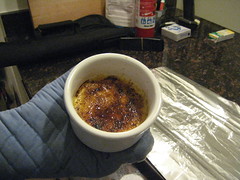Note to self: double-check the template arguments before asking the compiler to do so.
(WordPress hates to wrap, so I did it, badly.)
mpicxx -Wno-deprecated -c -o pagerank.o pagerank.cc
In file included from /usr/include/boost/graph/distributed/adjacency_list
.hpp:3959,
from pagerank.cc:3:
/usr/include/boost/graph/distributed/adjlist/initialize.hpp: In member fu
nction ‘void boost::adjacency_list<OutEdgeListS, boost::distributedS<Pr
ocessGroup, InVertexListS, InDistribution>, DirectedS, VertexProperty, Ed
geProperty, GraphProperty, EdgeListS>::initialize(EdgeIterator, EdgeItera
tor, EdgePropertyIterator, typename boost::detail::parallel::adjacency_li
st_config<OutEdgeListS, ProcessGroup, InVertexListS, InDistribution, Dire
ctedS, VertexProperty, EdgeProperty, GraphProperty, EdgeListS>::inherited
::vertices_size_type, const typename boost::graph::distributed::select_di
stribution<InDistribution, VertexProperty, typename boost::detail::parall
el::adjacency_list_config<OutEdgeListS, ProcessGroup, InVertexListS, InDi
stribution, DirectedS, VertexProperty, EdgeProperty, GraphProperty, EdgeL
istS>::inherited::vertices_size_type, ProcessGroup, typename boost::graph
::internal_vertex_name<VertexProperty>::type>::type&, boost::vecS) [with
EdgeIterator = boost::graph::metis_reader::edge_iterator, EdgePropertyIte
rator = boost::graph::metis_reader::edge_weight_iterator, OutEdgeListS =
boost::vecS, ProcessGroup = boost::graph::distributed::mpi_process_group,
InVertexListS = boost::vecS, InDistribution = boost::defaultS, DirectedS
= boost::directedS, VertexProperty = boost::no_property, EdgeProperty =
boost::no_property, GraphProperty = boost::no_property, EdgeListS = boost
::listS]’:
/usr/include/boost/graph/distributed/adjacency_list.hpp:1644: instantia
ted from ‘boost::adjacency_list<OutEdgeListS, boost::distributedS<Proce
ssGroup, InVertexListS, InDistribution>, DirectedS, VertexProperty, EdgeP
roperty, GraphProperty, EdgeListS>::adjacency_list(EdgeIterator, EdgeIter
ator, EdgePropertyIterator, typename boost::detail::parallel::adjacency_l
ist_config<OutEdgeListS, ProcessGroup, InVertexListS, InDistribution, Dir
ectedS, VertexProperty, EdgeProperty, GraphProperty, EdgeListS>::inherite
d::vertices_size_type, const ProcessGroup&, const typename boost::graph::
distributed::select_distribution<InDistribution, VertexProperty, typename
boost::detail::parallel::adjacency_list_config<OutEdgeListS, ProcessGrou
p, InVertexListS, InDistribution, DirectedS, VertexProperty, EdgeProperty
, GraphProperty, EdgeListS>::inherited::vertices_size_type, ProcessGroup,
typename boost::graph::internal_vertex_name<VertexProperty>::type>::type
&, const GraphProperty&) [with EdgeIterator = boost::graph::metis_reader:
:edge_iterator, EdgePropertyIterator = boost::graph::metis_reader::edge_w
eight_iterator, OutEdgeListS = boost::vecS, ProcessGroup = boost::graph::
distributed::mpi_process_group, InVertexListS = boost::vecS, InDistributi
on = boost::defaultS, DirectedS = boost::directedS, VertexProperty = boos
t::no_property, EdgeProperty = boost::no_property, GraphProperty = boost:
:no_property, EdgeListS = boost::listS]’
pagerank.cc:37: instantiated from here
/usr/include/boost/graph/distributed/adjlist/initialize.hpp:56: error: no
matching function for call to ‘add_edge(boost::detail::parallel::globa
l_descriptor<unsigned int>&, boost::detail::parallel::global_descriptor<u
nsigned int>&, const double&, boost::adjacency_list<boost::vecS, boost::d
istributedS<boost::graph::distributed::mpi_process_group, boost::vecS, bo
ost::defaultS>, boost::directedS, boost::no_property, boost::no_property,
boost::no_property, boost::listS>&)’
/usr/include/boost/graph/distributed/adjacency_list.hpp:2973: note: candi
dates are: typename boost::adjacency_list<OutEdgeListS, boost::distribute
dS<ProcessGroup, InVertexListS, InDistribution>, DirectedS, VertexPropert
y, EdgeProperty, GraphProperty, EdgeListS>::lazy_add_edge_with_property b
oost::add_edge(typename boost::adjacency_list<OutEdgeListS, boost::distri
butedS<ProcessGroup, InVertexListS, InDistribution>, DirectedS, VertexPro
perty, EdgeProperty, GraphProperty, EdgeListS>::vertex_descriptor, typena
me boost::adjacency_list<OutEdgeListS, boost::distributedS<ProcessGroup,
InVertexListS, InDistribution>, DirectedS, VertexProperty, EdgeProperty,
GraphProperty, EdgeListS>::vertex_descriptor, const typename boost::adjac
ency_list<OutEdgeListS, boost::distributedS<ProcessGroup, InVertexListS,
InDistribution>, DirectedS, VertexProperty, EdgeProperty, GraphProperty,
EdgeListS>::edge_property_type&, boost::adjacency_list<OutEdgeListS, boos
t::distributedS<ProcessGroup, InVertexListS, InDistribution>, DirectedS,
VertexProperty, EdgeProperty, GraphProperty, EdgeListS>&) [with OutEdgeLi
stS = boost::vecS, ProcessGroup = boost::graph::distributed::mpi_process_
group, InVertexListS = boost::vecS, InDistribution = boost::defaultS, Dir
ectedS = boost::directedS, VertexProperty = boost::no_property, EdgePrope
rty = boost::no_property, GraphProperty = boost::no_property, EdgeListS =
boost::listS]
make: *** [pagerank.o] Error 1
Well, obviously I called the wrong ctor, duh!



